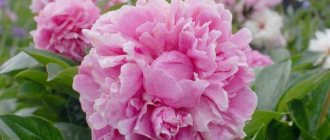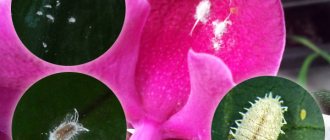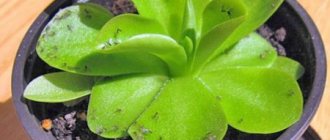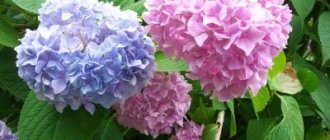Indoor plants are ideal for room decoration and help create an atmosphere of comfort and beauty. In addition to performing a decorative function, they make up for the lack of communication with nature, and are also able to disinfect toxic substances, absorb carbon dioxide, and destroy bacteria and microbes. Some of them can even be eaten. Medicinal plants deserve special attention, including such popular plants as aloe, geranium, kalanchoe, golden mustache, agave, and ficus.
About the Crassula
Popular rumor connects the fat woman with the material well-being of the family . Therefore, those who want to improve their financial situation should definitely have this plant in their home, not forgetting to bury a few coins in the pot. As the plant grows and develops, the material well-being of the owners of the house will increase.
a close energetic relationship between the money tree and its owners . If the people who live in the house are sick, then the fat plant absorbs the sick energy, begins to dry out, and its leaves fall off. After the owners recover, the tree can come to life again.
Crassula is able to purify indoor air and absorb unpleasant odors. The plant has medicinal properties and is used in folk medicine (mainly for external use).
Watering
All plants need watering. But there are some nuances here. Before purchasing any flower, try to find out as much information as possible about it. This knowledge will help you easily choose a flowerpot for a flower, find the best place for it in the house, paying attention to the amount of daylight, drafts, and also plan rational watering.
Different plants require a certain frequency of watering, some need regular watering, others, during the growing season, should not be watered for a long time at all. For some flowers, only warm water is needed, for others, snow will be a joy and only beneficial. Some plants require spraying, but there are those who die from such a procedure.
About geranium
Geranium is considered a talisman flower . It harmonizes the atmosphere in the house and protects its owners from quarrels and misfortunes. Geranium leaves have phytoncidal properties. The plant actively releases essential oil vapors, which can be easily felt by lightly rubbing the leaf. Inhaling the scent of geranium calms the nervous system, improves sleep, neutralizes irritability and evens out the disturbed biofield.
Under good conditions and sufficient lighting, geranium blooms almost all year round.
Plants can learn
With reason to believe that plants have some form of memory, can link events together to learn more about their surroundings, and use those associations to improve their chances of survival, the logical assumption for scientists was that the plant is capable of learning.
The author of the study was also Monica Galliano. The subject of the study was seed peas. He was dropped off at the base of a Y-shaped maze. Then, in a series of experiments, the researchers placed a fan and a light source at the end of either one branch of the maze or at opposite ends of a Y-shaped “puzzle.” The seedlings began to “hunt” for valuable light, learning to associate the wind from the fan with the location of the artificial sun.
The results showed that the planting material learned to choose the best growth direction for survival by predicting where the light would appear after it was removed. The ability of pea seedlings to sense two factors - the appearance of light (when) and its direction (where) - depending on the presence and position of the fan indicates that the plants are able to somehow encode temporal and spatial information, i.e. form a memory of her. Thanks to this ability, plants can change behavior using signals coming from the environment. The study found that associative learning is an important component of plant behavior. This type of learning is a universal adaptive mechanism that is found in both animals and plants.
Ficus
Ficus is often called the “family flower.” It has a lot of useful properties:
- Relieves insomnia.
- Improves indoor air.
- Absorbs formaldehyde, ammonia, toluene.
- Relieves irritability and calms.
In addition, ficus is credited with miraculous properties that help childless couples conceive a child. Spouses dreaming of a new baby are advised to place a ficus tree in the bedroom, carefully care for it - and then the long-awaited pregnancy will not be long in coming.
Plants turned green for self-defense
Scientists from the University of California, studying the efficiency of artificial photosynthesis systems, modeled a photovoltaic cell and analyzed the process of converting the energy of solar radiation in it.
Photons entering the cell cause the electron in the molecules to move to a higher energy level. And when their energy exceeds a certain threshold, the electrons leave the molecule and are transferred further. The same thing happens in plants, where their energy contributes to photosynthesis reactions, when hydrocarbons of varying complexity are formed from water and carbon dioxide.
Simulation of the operation of an artificial cell showed that if it “uses” all or at least most of the photons of visible light, inevitable difficulties will begin in it. The level of “noise” will increase, that is, the disordered occurrence of photoelectric reactions. This will be especially noticeable when the light level changes. Different molecules will have a random number of electrons that can leave these molecules.
Calculations showed that a more efficient mechanism would be to isolate two absorption bands separated by a large gap of unused photons. In the case of sunlight, the best choice turned out to be the absorption of photons in the blue and red parts of the spectrum. The green part of the spectrum lying between them is the noisiest, and increased “noise” from green light can disrupt the stability of photosynthetic products. In the case of living plants, it can lead to the formation of free radicals that are dangerous to cells.
The experiment carried out fully serves as an answer to the question “Why is the grass green?” This is how the plant protects itself, choosing the path of greatest stability. And the green color inherent in most plants arises from the most effective reflection of photons from the green part of the light spectrum, which protects the plant from the consequences of sudden changes in light levels.
About violet
These plants are extremely unpretentious . For good growth and plant violet requires light airy soil, uniform watering, no sudden changes in conditions, constant air temperature, a well-lit place and protection from direct sunlight. Plants reproduce by leaves. It is best to cut them from the second row.
Violets secrete phytoncides , which have a beneficial effect on the human nervous system, increase performance and help cope with bad mood and troubles. It is not recommended to keep the plant in the bedroom, since violet produces oxygen during the day and carbon dioxide at night, which can affect the quality of sleep and lead to headaches. People with a difficult character or overly sentimental should not get a violet.
It is believed that white violets clear the space of heavy thoughts and negative feelings and maintain a clean atmosphere in the house. Such violets have a beneficial effect on children with increased nervousness. Pink violets put you in a romantic mood, burgundy ones give you strength to achieve your goal, red ones attract money to the house, purple ones extinguish scandals.
Many gardeners refuse to keep violets in the house due to a number of superstitions . For example, it is believed that a girl who grows violets on her windowsill may be left without a groom. According to another sign, the plant can drive a man out of the house by upsetting the balance between male and female energy. At the same time, it is believed that violets standing on the window protect the house from aggressive energy coming from outside.
The soil
Growing indoor plants is not as easy as it seems at first glance. Soil is the most important component of successful plant propagation. Her choice must be approached responsibly. For indoor plants, humus, sand and fertile soil are mixed. Nothing will survive on soil that is poor in microelements, but on soil that contains a lot of humus and fertilizers, the plant can burn. There is an unspoken rule. If the root system of the plant is delicate, then the soil should be lighter.
Ferns require two-thirds soil consisting of leaf humus.
For pelargonium and fuchsia, choose soil that consists of humus of turf and clay soil in half.
Bulbous plants and plants with a strong root system (dracaenas) need heavier soil, consisting of up to one-third clay soil.
Orchids require a completely different combination. The soil consists of chopped bog moss, fern roots, peat and clay shards.
About the plant golden mustache
The golden mustache is not particularly beautiful or elegant, but it has healing properties and is capable of rejuvenating the body. In folk medicine, golden mustache is used to make medicinal infusions, tinctures, ointments, balms, and syrups that have many beneficial properties:
- Improves heart function.
- They have a wound-healing and regenerating effect.
- They have an antibacterial effect.
- Increases immunity.
- They have antiallergic properties.
- They have an anti-inflammatory effect.
- Eliminate pain syndrome.
About rosemary
Rosemary does not require special care , but does not tolerate excessive watering or proximity to roses. In their presence, he may completely wither away.
The energy of rosemary calms unrestrained people, extinguishes scandals and quarrels, relieves fatigue and relieves anxiety and fear.
Rosemary tincture is used in folk medicine for neuritis, thrombophlebitis and as a wound healing agent. Fresh and dried rosemary leaves are added to soups, salads, and meat dishes.
Plants “see” temperature
Using the same photoreceptors that help them adapt to sudden changes in light, plants are able to determine how the temperature changes and how best to respond to it, for example by changing their shape to better cool themselves.
An experiment with the Rhizoid species showed that at temperatures up to 22 °C they have the usual shape of shoots and leaves. But if the environment around them is warmer than 25 ° C, the shoots and leaves begin to sharply lengthen so that it is easier for the plant to cool by evaporation. Scientists have suggested that pigments, such as phytochrome, play the role of thermoreceptors. Phytochrome is a blue-green pigment that is sensitive to the red spectrum of light. It is responsible for “waking up” the plant in the morning and falling asleep at sunset. Careful measurements of phytochrome activity revealed its unusual “reaction” to temperature fluctuations. As it turned out, when the temperature rises above a certain level, phytochrome suddenly stops working in the usual way and is activated with a delay. Plants, reacting to its slowed activity, begin to gradually change their shape in order to cool better.
About orchids
Orchids are prized for their striking beauty and grace . However, keeping them in the bedroom is strictly not recommended, as the aroma of this plant can cause headaches, nausea and anxiety. An orchid is a typical vampire flower, capable of pumping out strength and energy. It is not recommended to have orchids for people with diseases of the nervous system, as well as those who are indecisive and apathetic.
Plants can scream
Scientists have recorded an ultrasonic signal emanating from trees during drought. They argue that trees in stressful situations produce sounds that can be recorded and perceived as signs of a dangerous water shortage for the plant.
In a tree trunk, water and a number of other substances rise through a network of special vessels called xylems. To deliver water to the top of the tree, the pressure in this system must be several times higher than atmospheric pressure. When drought occurs, there is not enough water to fill the entire container with xylem, and the process of bubble formation (cavitation) begins, which is destructive for trees. Cavitation is accompanied by a high-frequency signal, which scientists were able to detect.
Can plants listen? This is a question and we discussed the latest scientific research on the topic in an article about the effect of music on plants.
Other interesting facts about indoor plants
- Azalea perfectly relieves eye fatigue; just admire this beauty for half an hour and your eyes will feel better.
- Flowers do not tolerate alcohol fumes, with the exception of azalea.
- Eucalyptus can stop tissue breakdown.
- Cyclamen can live 25-75 years .
- An adult aloe bush can survive without water for several years.
- Chlorophytum perfectly purifies the air. In one hour, an adult plant can clear the air of bacteria by almost 100% .
- Some indoor plants can trigger allergies and asthma.
- Cacti protect against electromagnetic radiation.
Plants have memory
Despite the fact that plants do not have a brain, they are able to connect past events with current ones, remembering what happened previously. During the experiment, Australian scientists placed seedlings in a maze with a light source and a fan. It turned out that even when the position of the lamp and fan changed, at first the plants “out of habit” were drawn to where the light and air they needed were previously available.
The newest research on this topic comes from Dr. Monica Galiano, who studies plant communication. Dr. Galiano decided to drop several pots of mimosa pudica from a small height, such a fall should only scare the plants without causing them harm. This flower was chosen for its unique properties: the plant's petals and leaves close when the mimosa is stressed, so its reaction is easy to observe. After several falls, the plants stopped reacting in any way to the stress, indicating that the lesson had been learned. To check, the flower was scared in a different way - and the leaves curled up from stress.











